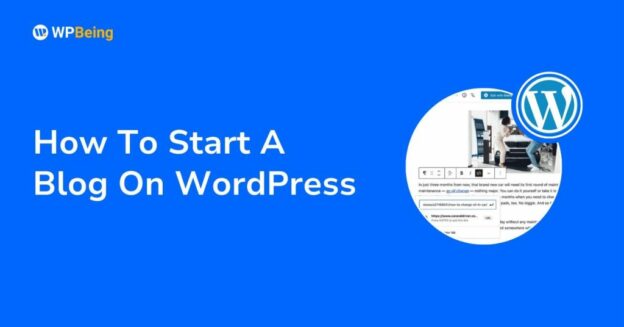Starting a blog is one of the best ways to share your ideas, build an audience, and even generate income online. With over 40% of the web powered by WordPress, it’s no surprise that bloggers choose WordPress as their go-to platform.
It’s flexible, beginner-friendly, and powerful enough to grow with your needs. This guide will cover everything you need to know about launching and managing a WordPress blog.
Contents
- 1 Why Choose WordPress for Blogging?
- 2 Step 1: Set Up Hosting and Install WordPress
- 3 Step 2: Choose a WordPress Theme
- 4 Step 3: Install Essential Plugins
- 5 Step 4: Write and Publish Blog Posts
- 6 Step 5: Optimize for SEO
- 7 Step 6: Monetize Your Blog
- 8 Step 7: Maintain and Grow Your Blog
- 9 FAQ
- 10 Related Posts
Why Choose WordPress for Blogging?
-
Free and Open-Source – WordPress itself is free to use.
-
Beginner-Friendly – No coding skills required.
-
Flexible Customization – Thousands of themes and plugins.
-
SEO-Friendly – Optimized for search engines out of the box.
-
Scalable – Start small and expand into an online business.
Step 1: Set Up Hosting and Install WordPress
To start, you need:
-
Domain name (yourblog.com).
-
Hosting provider – Choose a WordPress-optimized host such as SiteGround, Bluehost, or Hostinger.
-
One-click WordPress installation – Most hosts make it simple.
Step 2: Choose a WordPress Theme
Your theme defines your blog’s look and feel. For beginners:
-
Free Themes – Astra, OceanWP, Neve.
-
Premium Themes – GeneratePress, Divi, Kadence.
Look for responsive, lightweight, and customizable designs.
Step 3: Install Essential Plugins
Plugins extend your blog’s functionality. Must-have plugins include:
-
Yoast SEO – For search engine optimization.
-
WP Super Cache or W3 Total Cache – To improve speed.
-
Akismet – To block spam comments.
-
Elementor – For drag-and-drop page building.
-
UpdraftPlus – For backups and security.
Step 4: Write and Publish Blog Posts
Tips for writing:
-
Use engaging headlines with target keywords.
-
Keep paragraphs short for readability.
-
Add images, videos, or infographics.
-
Use categories and tags for better organization.
-
Schedule posts consistently.
Step 5: Optimize for SEO
-
Research keywords with tools like Google Keyword Planner or Ahrefs.
-
Use SEO plugins to optimize titles and meta descriptions.
-
Build internal links between your posts.
-
Share content on social media to boost traffic.
Step 6: Monetize Your Blog
Once your blog gains traction, you can earn money through:
-
Ads (Google AdSense, Mediavine).
-
Affiliate marketing (earn commission by promoting products).
-
Sponsored posts from brands.
-
Digital products (eBooks, courses).
-
Membership or subscription content.
Step 7: Maintain and Grow Your Blog
-
Update plugins and WordPress regularly.
-
Keep backups of your site.
-
Track performance with Google Analytics.
-
Engage with your readers via comments and email newsletters.
-
Continuously improve site speed and design.
FAQ
Q: Is WordPress free for blogging?
Yes, WordPress.org is free, but you need to pay for hosting and a domain.
Q: Do I need coding skills to run a blog on WordPress?
No. WordPress is beginner-friendly, and most features can be managed without coding.
Q: Can I switch my blog theme later?
Yes. You can change themes anytime, but check compatibility with your content and plugins.
Q: How do I get traffic to my WordPress blog?
Focus on SEO, social media promotion, and consistent content publishing.
Q: Which is better for blogging: WordPress.com or WordPress.org?
WordPress.org is more flexible and recommended if you want full control and monetization options.
👉 With WordPress, you can start a simple blog today and transform it into a full online business tomorrow. All it takes is consistent effort, quality content, and the right tools.
